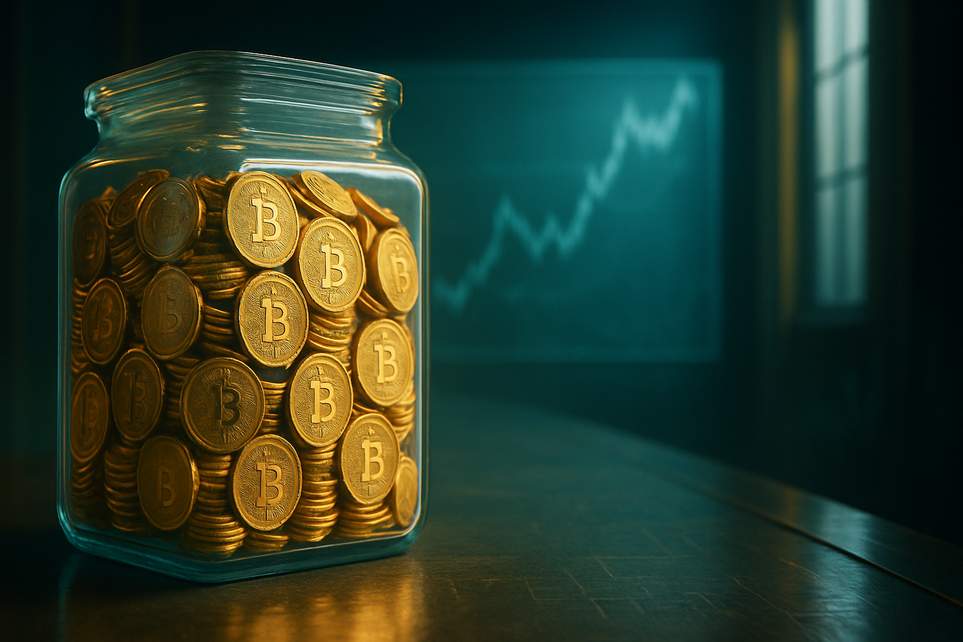The Great HODL: How immobile supply shapes Bitcoin’s next real squeeze
Bitcoin’s flirtation with roughly $101,000 wasn’t just a price tick — it was a signal. After a long season of coin hibernation, some of those sleepy wallets started to move, big funds shifted from buying to selling for a few sessions, and suddenly the market’s tightness got a reality check. In plain terms: when previously immobile coins thaw, the available float grows and rallies can stall until demand swallows the extra supply.
Why the float matters (and why you should care)
Think of Bitcoin’s tradable supply as a crowd at a concert. Most fans are glued to their seats (long-term holders), a few are in the snack line (miners selling to cover costs), and the stage manager (funds and treasuries) either yells “more room!” or “hold the line.” When the glued-to-the-seat crowd loosens up, the aisle clears and prices can wobble.
Right now, the illiquid stockpile — coins held by wallets that rarely spend — hovered in the mid-14 million range, roughly three-quarters of circulating supply. That’s a historically big chunk sitting still. But in mid‑October something shifted: roughly 62,000 BTC that had been quiet started moving, the first notable loosening after months of accumulation. When that happens, the tradable float temporarily fattens and rallies can lose steam.
The mechanics are annoyingly simple and delightfully boring. Post-halving issuance is fixed at about 3.125 BTC per block, which works out to roughly 450 BTC each day. That steady trickle interacts with three wildcards: how fast long-term holders decide to sell, how much miners need to offload, and how many coins funds and corporate treasuries are willing to absorb. If buyers (ETFs, treasuries, big institutions) take more than issuance plus sales, the float tightens and price tends to climb. If not, prices need to digest the extra supply.
Recently we saw fund flows swing: some days showed large cash leaving products in the hundreds of millions of dollars, then a partial return, and overall multi-day redemptions measured in the high hundreds of millions to near billions across providers. Those swings matter because U.S. demand is concentrated — if the biggest buyer pauses, the collective appetite often dips, and that shows up as looser markets.
Miners sit on the margin: they don’t change issuance, but their selling can add a few hundred BTC to daily outflows when hashprice or fees get ugly. So even if issuance itself is stable, miner behavior can flip the net balance if they’re forced to hedge or cash out.
A short, useful checklist for traders and curious humans
Want a practical watchlist instead of guessing? Here’s the compact version:
– Watch Illiquid Supply Change: a rising 30‑day rate means old coins are going back to sleep — float tightens. A fall means more tradable coins.
– Keep an eye on long-term holder activity: when over-one-year cohorts stop spending on up days, that’s often a precondition for renewed upside. When they sell into strength, rallies can sputter.
– Track daily ETF creations in coin terms vs. issuance (~450 BTC/day). If fund demand regularly exceeds issuance plus casual selling, the market tightens quickly. If it’s below, expect consolidation.
– Monitor miner flows: baseline scenarios assume miners are roughly neutral, but if miner outflows hit 200–500 BTC/day, that sensitivity can flip the market tone fast.
– Remember macro: dollar strength and global liquidity affect flow velocity. Tighter liquidity or a firmer dollar has coincided with weaker bids in recent stretches.
In short: the next real squeeze will be less about fireworks and more about math. When long-term selling decelerates and institutional creations outpace the daily 450 BTC drip, liquidity tightens and a range gives way. Until then, expect the market to test patience — and enjoy the popcorn while watching whether old coins fall back asleep or keep dancing.

